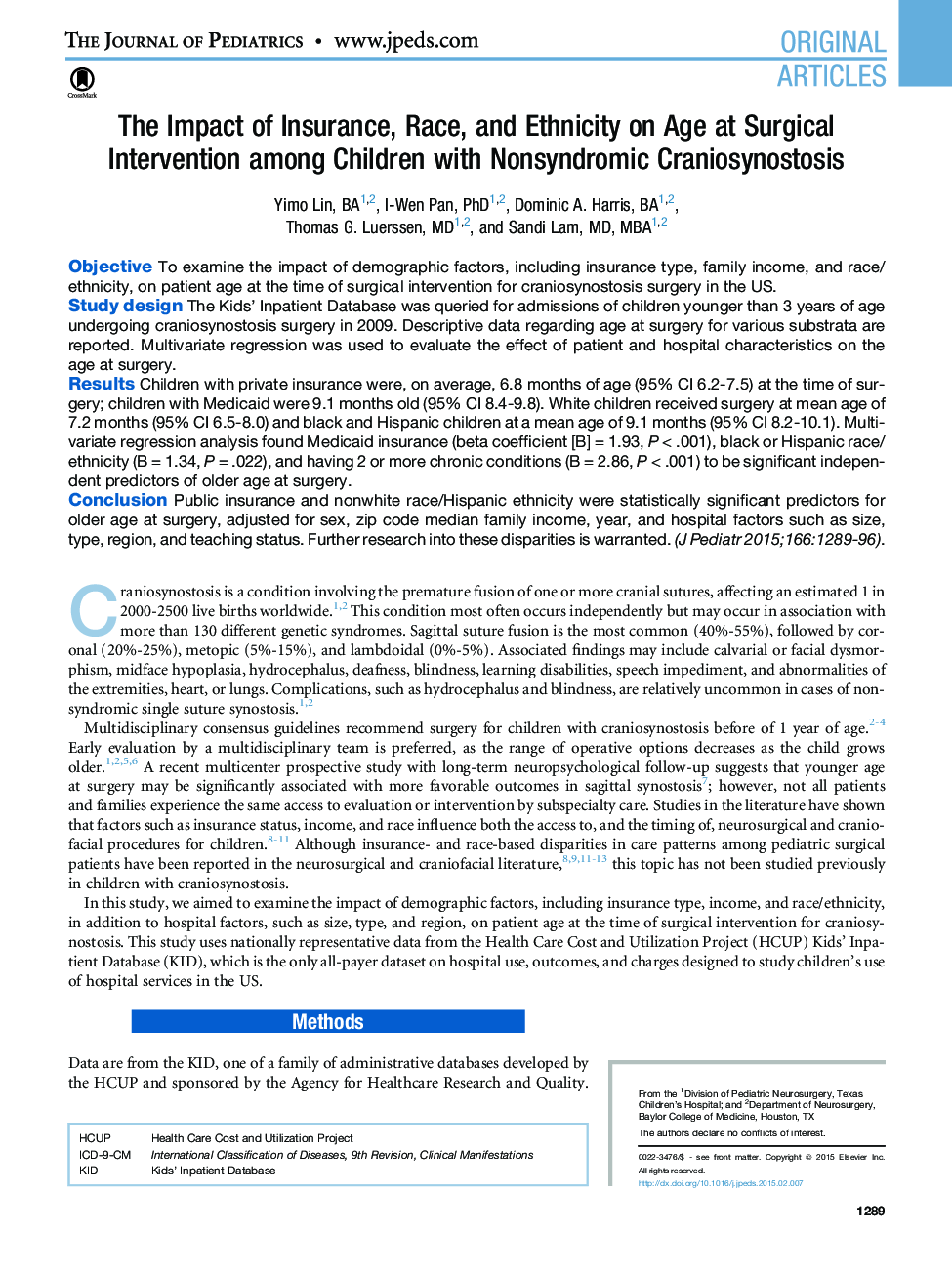| Article ID | Journal | Published Year | Pages | File Type |
|---|---|---|---|---|
| 6221169 | The Journal of Pediatrics | 2015 | 8 Pages |
ObjectiveTo examine the impact of demographic factors, including insurance type, family income, and race/ethnicity, on patient age at the time of surgical intervention for craniosynostosis surgery in the US.Study designThe Kids' Inpatient Database was queried for admissions of children younger than 3Â years of age undergoing craniosynostosis surgery in 2009. Descriptive data regarding age at surgery for various substrata are reported. Multivariate regression was used to evaluate the effect of patient and hospital characteristics on the age at surgery.ResultsChildren with private insurance were, on average, 6.8Â months of age (95% CI 6.2-7.5) at the time of surgery; children with Medicaid were 9.1Â months old (95% CI 8.4-9.8). White children received surgery at mean age of 7.2Â months (95% CI 6.5-8.0) and black and Hispanic children at a mean age of 9.1Â months (95% CI 8.2-10.1). Multivariate regression analysis found Medicaid insurance (beta coefficient [B]Â =Â 1.93, PÂ <Â .001), black or Hispanic race/ethnicity (BÂ =Â 1.34, PÂ =Â .022), and having 2 or more chronic conditions (BÂ =Â 2.86, PÂ <Â .001) to be significant independent predictors of older age at surgery.ConclusionPublic insurance and nonwhite race/Hispanic ethnicity were statistically significant predictors for older age at surgery, adjusted for sex, zip code median family income, year, and hospital factors such as size, type, region, and teaching status. Further research into these disparities is warranted.
